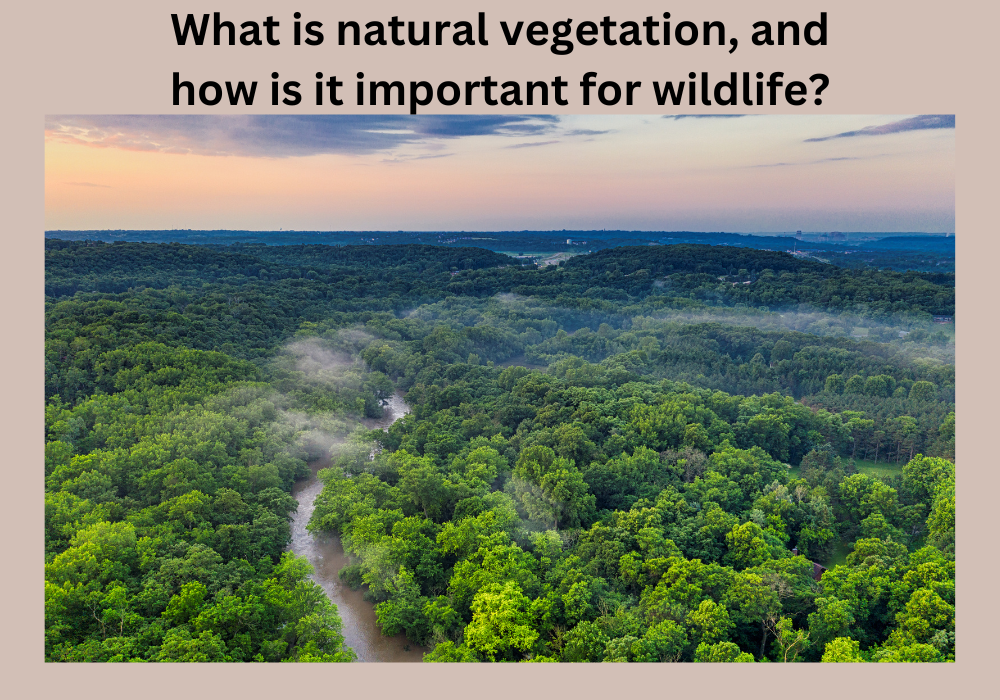
What is natural vegetation, and how is it important for wildlife?
Natural vegetation alludes to the vegetation that develops without human mediation or development in a specific locale or biological system. It alludes to the local or native plant species that have adjusted to the environment, soil conditions, and other natural variables. They live in a particular region over the long haul. Students can learn more about natural vegetation and wildlife in online tuition for class 9 and connect with tutors.
Natural vegetation changes extraordinarily, relying upon variables like temperature, precipitation, soil type, height, and daylight accessibility. Various locales and environments all over the planet have particular regular vegetation types. These include timberlands, meadows, deserts, tundra, and wetlands, and that’s only the tip of the iceberg.
Natural vegetation is essential in maintaining biological system balance and giving living space to untamed life. It adds to environmental guidelines, soil adjustment, water cleaning, and biodiversity protection. Human exercises, like deforestation, urbanisation, and horticulture, can essentially affect and change regular vegetation designs. It prompts living space misfortune and irregular biological characteristics.
Examples of natural vegetation
Forests: These are described by thick tree cover and are of various kinds. Examples are tropical rainforests, mild deciduous woods, coniferous woodlands, and boreal timberlands. They support various plant species, including trees, bushes, and understory plants.
Fields: These have coverings of grasses and herbaceous plants and lack trees. Fields can additionally divide into savannas, grasslands, steppe, and pampas, contingent upon the particular attributes and climatic circumstances.
Deserts: Deserts possess inadequate vegetation because of low precipitation and outrageous aridity. They ordinarily comprise dry-spell open-minded plants. It includes desert plants, succulents, and bushes adjusted to survive in cruel desert conditions.
Tundra: Tundra locales can track down in the Icy and snow-capped regions. These are recognisable by a short developing season and frigid temperatures. They support low-developing vegetation like greeneries, lichens, bantam bushes, and grasses.
Wetlands: Wetlands incorporate different environments, including bogs, marshes, lowlands, and mangroves. They have water-immersed soils and backing vegetation adjusted to wet circumstances, like water lilies, reeds, sedges, and cattails.
Importance of natural vegetation for wildlife
Cover and settling destinations: Normal vegetation, like woods, prairies, and wetlands, gives fundamental sanctuary and settling locales for an extensive variety of natural life. Trees, bushes, and vegetation offer defensive cover from hunters and brutal weather patterns, permitting creatures to find asylum and fabricate homes or lairs.
Food and rummaging valuable open doors: Natural vegetation has a different cluster of plant species, which thus gives food sources to untamed life. Trees, grasses, organic products, blossoms, seeds, nectar, and foliage are fundamental parts of untamed life that consume fewer calories. Local vegetation guarantees a supportable food supply for herbivorous, omnivorous, and nectar-taking care creatures.
Biodiversity support: Natural vegetation advances biodiversity by giving various specialties and territories for various species. Plant species draw in different bugs, birds, warm-blooded animals, and creatures, making interconnected food networks and natural associations.
Rearing and regenerative environments: Numerous untamed life species depend on unambiguous natural vegetation for reproduction and propagation. Wetlands act as pivotal favourable places for different creatures of land and water, waterfowl, and sea-going species.
Relocation and development passageways: Natural vegetation can be relocation hallways or pathways for natural life, empowering occasional developments, dispersal, and hereditary trade.
Cover and security: Natural vegetation offers disguise and insurance for natural life by mixing them into environmental elements and decreasing their permeability to hunters or prey. The various tones, surfaces, and examples of vegetation help creatures mix in and keep away from recognition.
Environmental equilibrium: Natural vegetation adds to the overall natural equilibrium of a biological system. It upholds the working of different natural cycles, including supplement cycling, water guideline, and soil security. Learning these topics has become easy through Online Tutoring Services as students can learn from tutors. These services are beneficial for the students in the longer term.
